10 insights from rocket CFD for a mind-blowing moonshot
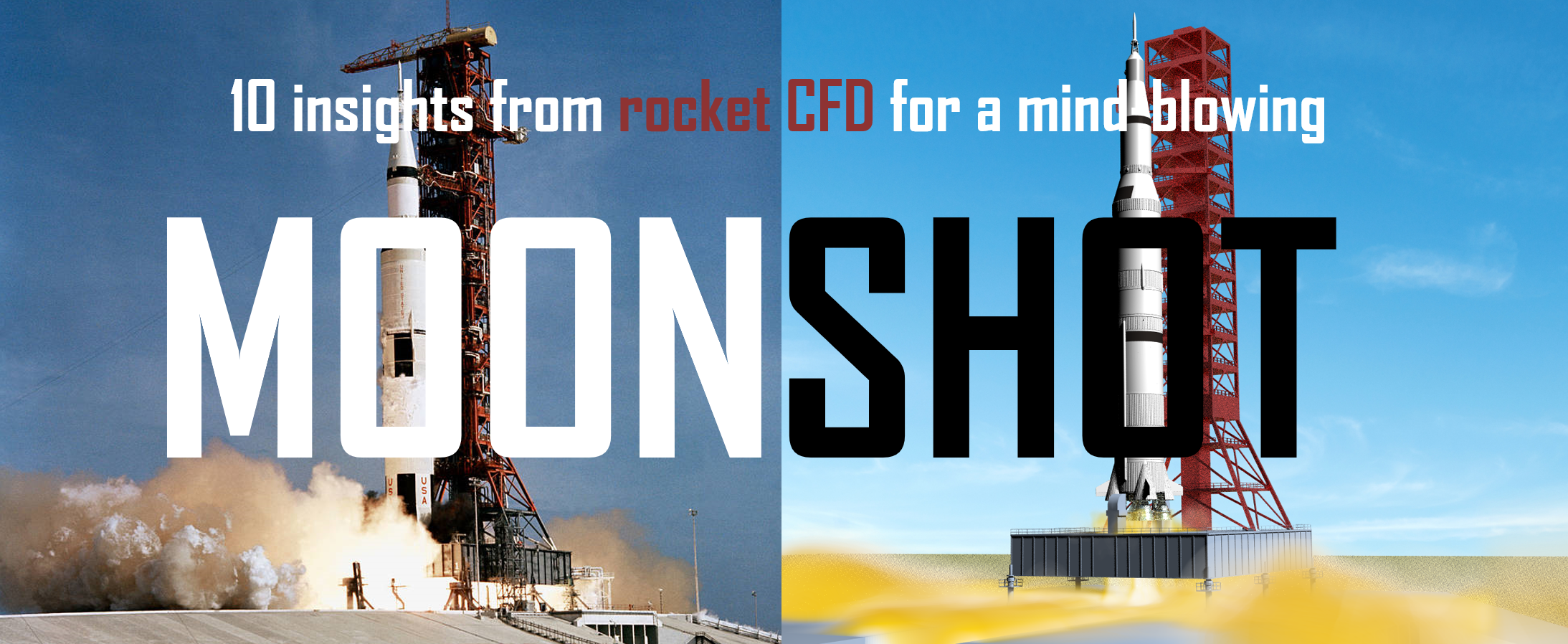
I am an engineer by heart and a marketer by accident. And when I arrived at spacecraft engineering my heart got broken… Here’s a story I want to tell you, not because it is easy, but because it’s hard!
“This nation should commit itself to achieving the goal, before the decade is out, of landing a man on the moon and returning him safely to the Earth.”
JFK
When John F. Kennedy announced one of the most ambitious missions in human engineering, barely had he imagined that he was shaping a term that would describe a whole new category of projects to come. Today, the Cambridge Dictionary reads
moonshot noun [C] (BOLD PLAN)
a plan or aim to do something that seems almost impossible
And since Neil Armstrong made his one small step for a man, mankind has launched thousands of their so-called “moonshots”. And while some of those projects may indeed have been challenges of similar or even bigger dimensions than shooting humans to the moon, there is another sort of moonshot project that pops up every now and then: The “art” of tying a marketing campaign to spaceflights.
Marketing the moon
No doubt NASA has ever since been a master of engineering and marketing alike. And I would even argue, without marketing they would never have made it to the moon. But then followed the hijacking culture. Company after company found “good” reasons why they are part of the success. Sometimes valid, sometimes not so much.
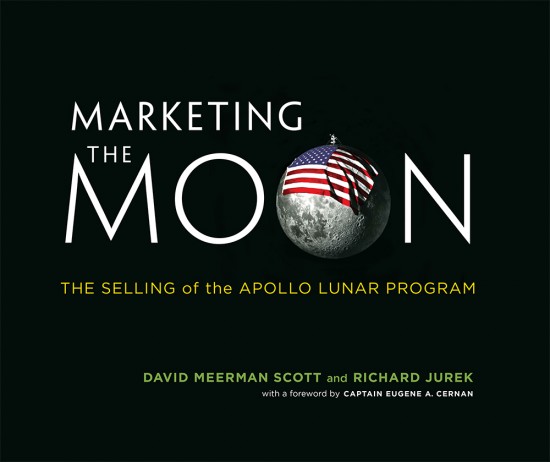
Another of these “marketing with the moonshot” waves hit the shores of social media two years ago. 50th anniversary of Apollo 11. No question, the engineer in me got heavily excited by the reminiscence of one of the greatest engineering achievements in human history. And likewise, the marketer in me got heavily disturbed by the way some companies were trying to hijack this great engineering achievement to tie their products that typically have absolutely nothing to do with spaceflight engineering to the first moonshot in history.
Moonshot attempt #1 – failed
It bugged me a bit. But things got really bad as I had this idea a few weeks prior to the anniversary: I so badly wanted to launch a virtual Saturn V using computational fluid dynamics CFD simulation. I had this ultimate plan to generate a digital replica of the original NASA broadcasting of the launch from 1969. It was a plan or aim to do something that seems almost impossible.
And boom! I failed. It was my presonal Waterloo. Or – wait this is a space blog – call it my ARMAGEDDON.
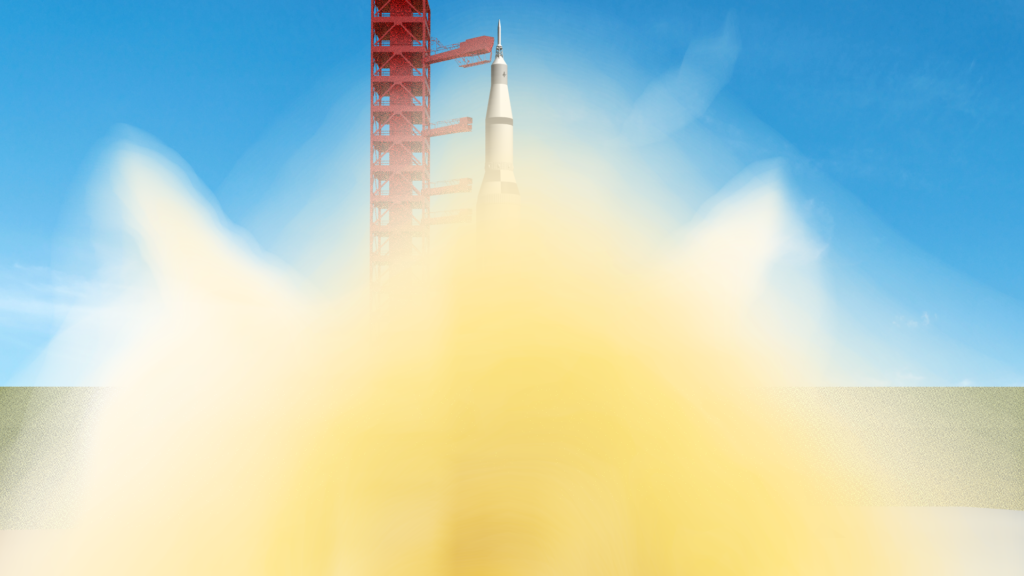
In the end, the 50th anniversary passed, my rocket making a few inches from the launch pad with a massive (numerical) explosion! All I had were a few fancy-looking screenshots by the time the anniversary happened. I had to admit rocket science is indeed rocket science.
Can you mend an engineer’s broken heart?
Meanwhile, two years have passed! The Apollo hype is gone (again) and gave way for the rise of a new spaceflight excitement era. My disturbance about the wannabe-moonshots in marketing around Apollo 11 left for amusement. What stayed regardless is these three things:
One, my passion for marketing. Two, my fascination for space flight engineering. Three, this frustration that I failed on my own moonshot attempt. And so I decided I was not finished here. Not because it is easy, but because it is hard!
The more I got into it the more I learned what a hard nut rocket CFD is to crack for a part-time launcher. I quickly learned that I needed a little help from my friends, a bunch of friends. And while I learned I decided I would share the lessons learned. With you, the marketer or engineer or project manager that is after his own personal or company moonshot. What came out is a guide to successful moonshots, be they in marketing, engineering, or anywhere else. What came out is
10 insights for a mind-blowing moonshot that only rocket CFD can deliver!
But, did the digital replication of Apollo 11’s Saturn V launch come out as well, you wonder? Can two years of investment mend an engineer’s, broken heart? Well, time for the countdown. Ignition sequence started!
10. Moonshots are rocket science – do your research!
Like most of us, I am not a proper spacecraft engineer. Honestly, I have close to no clue about rocket science. But as we all know research is everything for an authentic story and a successful (marketing) project. So for those that feel like me and don’t know where to start, here’s my recommended list of essential lecture:
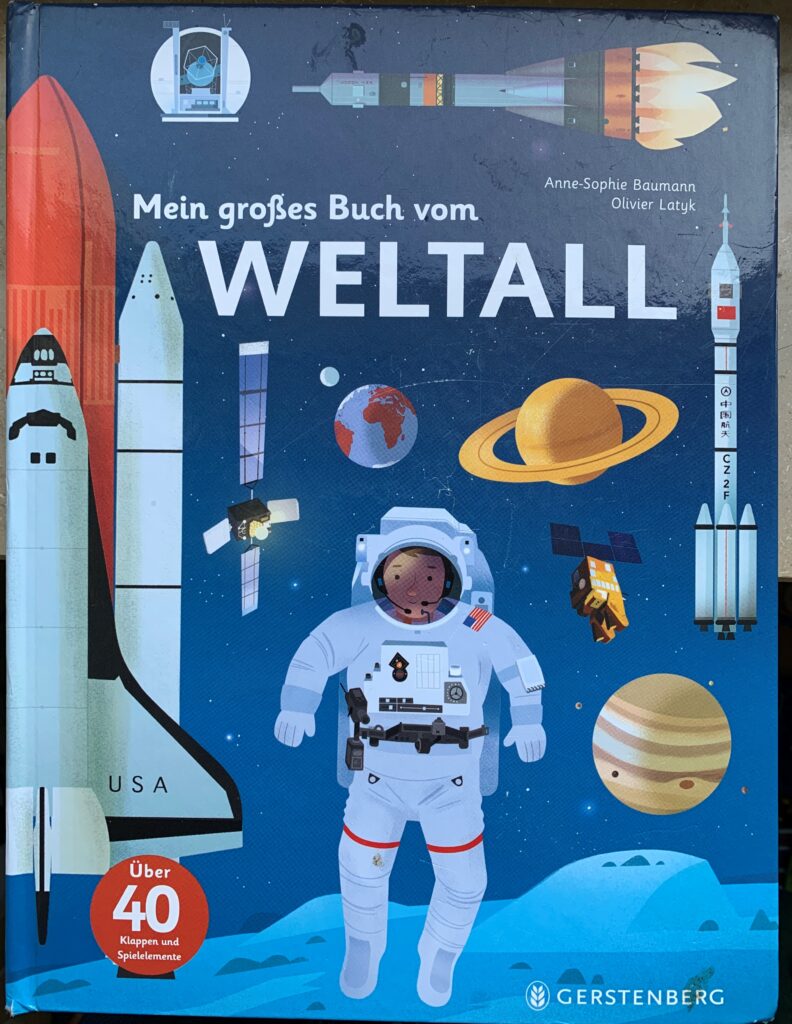
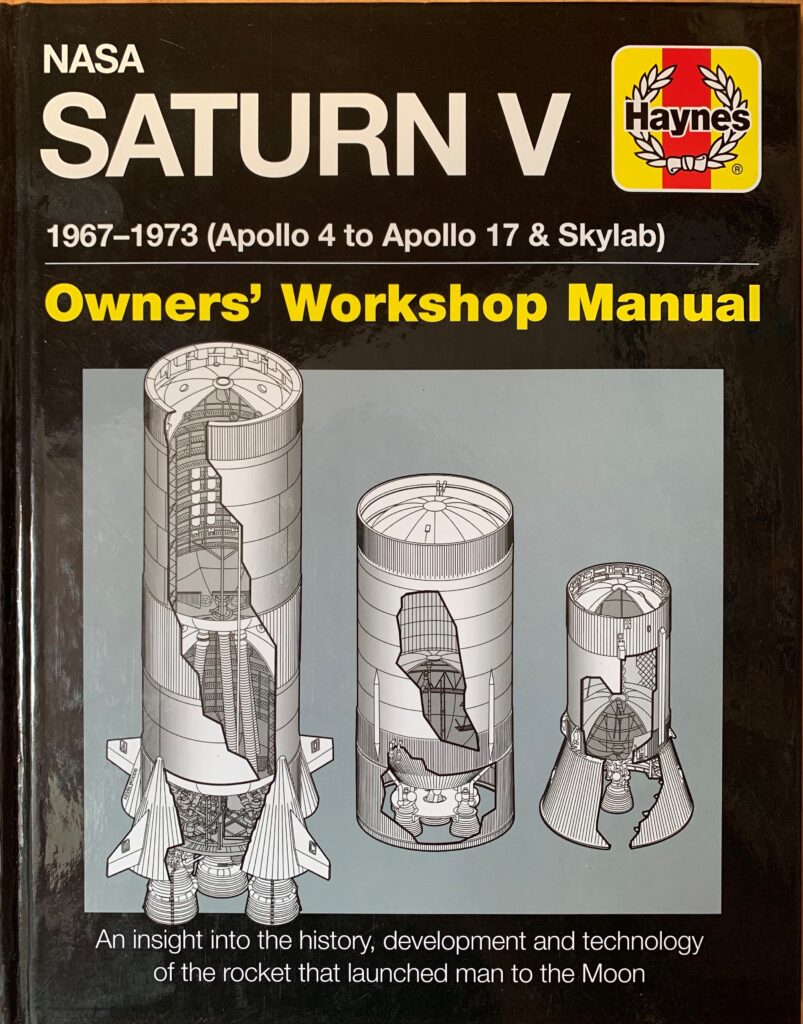
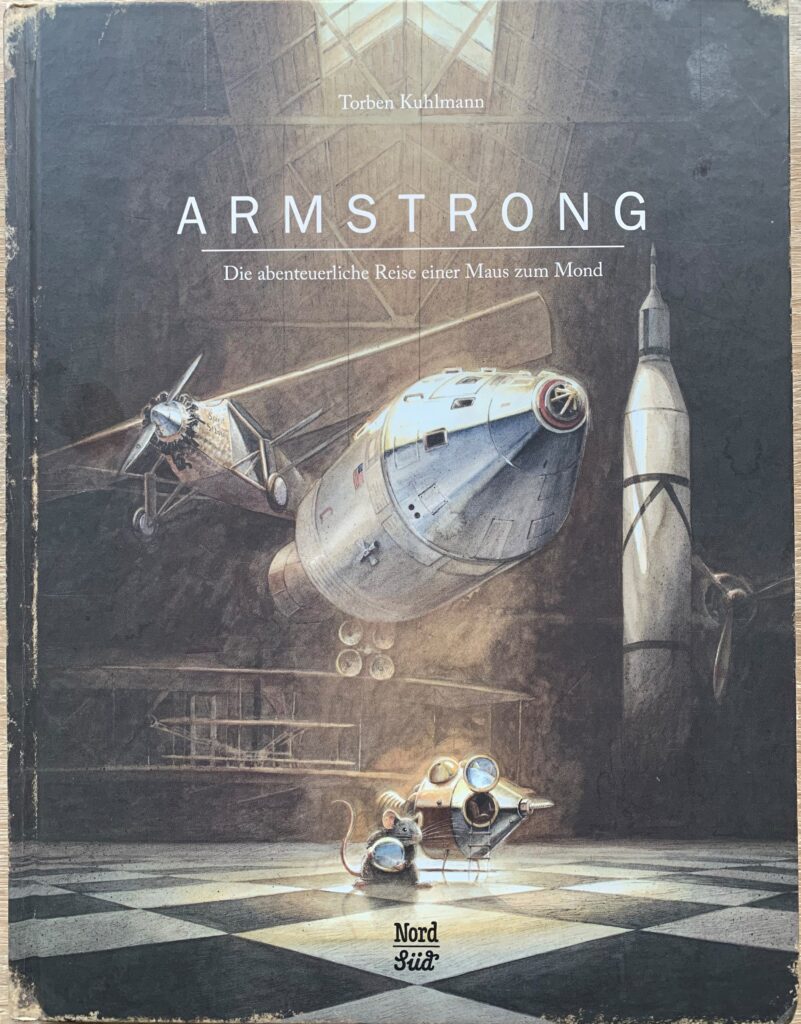
Once you have gone through an extensive study of those bare-minimum essentials, ideally add a little bit of hypersonic spacecraft aerodynamics CFD and a chunk of combustion simulation. Once there, you should be in good shape to launch a project that gets you a little closer to the moon.
9. Divide and Conquer – Segmentation is everything
Caesar knew it. Marketers know it. And of course, rocket scientists know it: If you want to conquer, you need to divide. Want to rule a market, split it into segments. Want to conquer space, divide your rocket. If you want to reach the moon you need to boost your flagship and drop the auxiliary periphery at the perfect moment. Only if you do that right will you be able to boost your message. This is indeed rocket science, and that’s why spacecraft engineers use rocket CFD to predict this critical moment. Like in this great example of the delta rocket by my colleagues Ritu Eshcol and Jeremy Hanke.
But divide and conquer as a tactic to successful moonshots goes even further. In meshing, project management, and storytelling alike, refinement is everything. You need to constantly work on the details to reach the fidelity that a moonshot requires. Clearly, the CFD engineer has a slight benefit as he could leverage adaptive mesh refinement to automatically refine in critical areas. Check out this great video by my colleague Jeremy Hanke.
For all the others, I fear you still need to manually refine your story or project plans you go.
8. Why so serious? – Rocket CFD is fun!
Some like talking about how they are delivering serious CFD. Well, honestly, I don’t too often. As a marketer and fun-loving criminal, I tend to do CFD that’s kind of fun. But that does not prevent me from taking it quite seriously. The rocket CFD simulation below is following the so-called “fun moonshot CFD marketing” approach. Inspired by the amazing cartoon by Gary Larson and the awesome project by Ben Jarvis and the folks at Raptor Aerospace Ltd., I knew I had to launch that rocket with CFD. Said and done, placed on social media it triggered the attention of some key players to further spread the word to outer space, see 7. Admittedly it was still not a Saturn V, and it never reached the moon… but a huge audience.
7. Print is dead? Well, 2D, maybe!
In marketing, they say “print is dead”. In engineering, they say, “print is the future”!
Both are true. It’s just one dimension that decides between life and death. Yes, 2D-print is dead. But 3D printing is about to sky-rocket! And for all you moon-shooters, I have some good news: The future is already here, as this hot stuff proofs: Conjugate heat transfer simulation of a 3D printed rocket nozzle. At the formnext additive manufacturing convention, I’ve seen it come alive, and it was anything but dead.
6. Deep impact starts with influence
After shooting the most amusing rocket ever designed into the comic sky with rocket CFD (see #4), the producer of a decent youtube influencer came to me. They were just about to 3D-print (see #5) and launch a DIY rocket. I said I am happy to take my toy-rocket simulation model, swap the geometry and see how theirs flies before any “ink” is wasted. Engineers call this frontloading or shift-left or early insight in product development. That’s the cool thing about automated simulation workflows. Generate your template, swap the input, and – boom – there are the results for your new design. If you are a marketer and get jealous now, just compare the story at hand with a former one from the same author. You will see templating and swapping works for you as well.
Or – just have some fun and watch how to make an impact with influence:
I am almost forty years old but this will not stop me from being a child whenever I could! Thanks, David Tobin and Joel Telling aka the 3D printing nerd. This was, one more time, so much fun!
Coming from the comic rocket, it was a step in the right dircetion. It still was no Saturn V, but hey, it was a real rocket that flew. And if you are now keen to launch a DIY rocket yourself and want to do it right the first time, here’s your technical guide on how to do rocket CFD.
5. Engage with your target
If you don’t know your target, landing a moonshot will fail for sure. Aerospace engineers tend to spend a lot of time researching the object of desire prior to launching anything in its direction. Like a lunatic, the engineers responsible for landing Apollo 11 engaged with the moon. Likewise connecting with your target is essential in any moonshot project. In marketing, you need to engage with your target audience. However, if you aim for the moon your call to action has to be a little more sophisticated than the ordinary down-to-earth “buy this!”
My secret: I like to use the so-called rocket CFD (“Call for Differences”) trick:
Can you spot the ten differences between the real and the digital twin in the video below?
Can you tell which one’s which at all?
This is what we engineers mean by digital twin.
4. Don’t run out of fuel
With almost 35 meganewtons the Saturn V rocket is the most powerful machine human beings ever created. In order to shoot that beast into space, it required five F1 rocket engines generating roundabout 7 Mega Newton each. (BTW that was one of the reasons why it was so difficult for me to simulate it – this is massive, hot and fast!). But where did each of these monsters take this incredible amount of thrust force from, you wonder? Well, at lift-off, over 70 percent of the total weight of the rocket – btw. total mass was roundabout 2900 tons – was – you guessed it – fuel!
Now, what do we learn from this for our moonshot project? Well, to do a moonshot, you need to ensure you don’t run out of fuel halfway – and with fuel I mean a lot of fuel! But power is nothing without control, so burning 20 tons of fuel per second requires a decent feeding and tank system. How do you do all that, you ask?
My colleague Gabriel analyzed in his study about satellite fuel tank sloshing. Not a rocket fuel tank admittedly, but still something to learn from for your big launch. Because the last thing you want when you sit on 1.2 million liters of kerosene – and that’s what you will need to do for a successful moonshot project – is something goes wrong.
Now I understand human beings don’t run on kerosene. So in order to keep going during your moonshot project, here’s my recommended refueling strategy. And yes, that fuel comes from a “Rocket”.
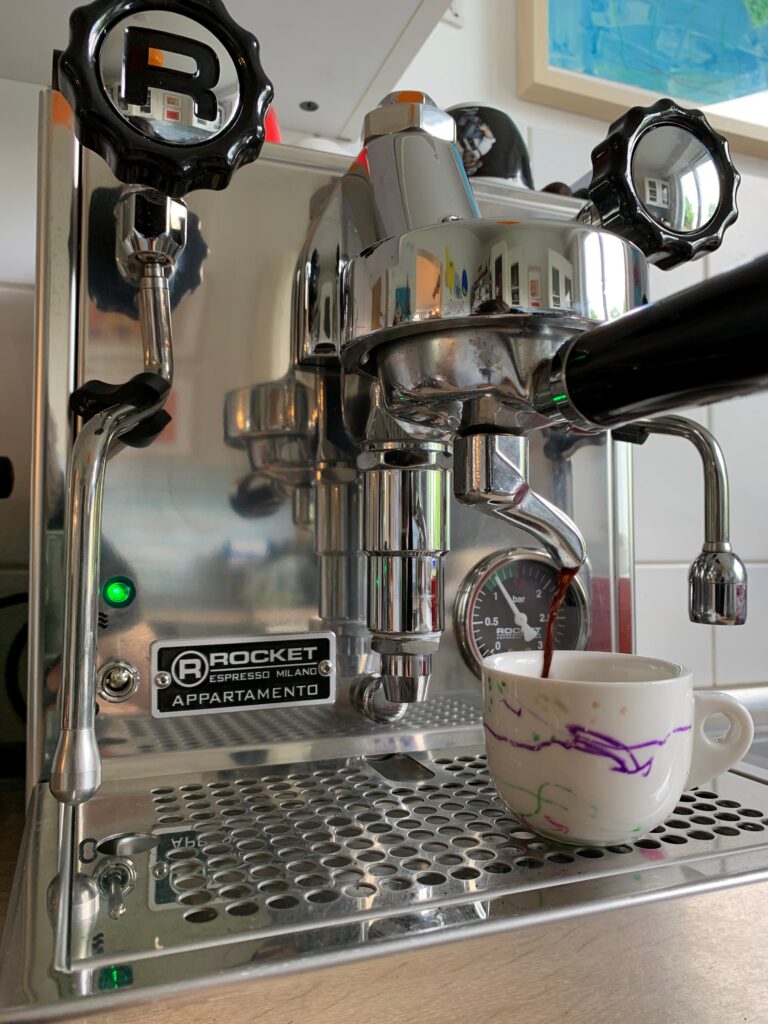
3. Bring them home
When it comes to hijacking Apollo for the sake of marketing arbitrary products, the mainstream creative jumps onto Apollo 11. But as we all know you need a differentiator to stand out from the crowd: And so the real connoisseur of marketing with moon-flights knows that there is a mission that from a dramatic perspective clearly goes beyond the first man on the moon. Apollo 13! Told by my friend Stephen Ferguson it’ll give you the creeps: A story about life and death, success and failure, and an outstanding engineering thriller stuffed with excitement. Why? Because even the best project is worthless if there is no return (on investment), and the best campaign is worthless if there are no leads.
It’s as simple as this: There is no value in flying them to the moon… if you don’t bring them back!
And CFD of hypersonic reentry is indeed a hot topic as the simulations by my colleagues Chris Nelson show and Stamatina Petropoulos explains here in more detail.
2. Real moonshot products help shooting people to the moon
Sounds like a no-brainer, but given the list of moonshot project attempts in marketing out there that tried to hijack spaceflight to make an impact, this insight goes to my marketing colleagues only:
Are you a marketer? Has your product nothing to do with spacecraft engineering? Is the only connection between your product and the Apollo or any other space flight mission that you want to make people believe is an equally great achievement to human beings? Does all this bring you to the conclusion that it’s about time to leverage rockets as your marketing vehicle… If all of this is a yes for you, here’s my call:
Don’t do it!
To my engineering fellows, this reads slightly different:
Are you an aerospace engineer? Has your product to do with spacecraft engineering? Is there a close connection between your product and the Apollo or any other space flight mission that should become an equally great achievement to human beings? All this brings you to the conclusion that it’s about time to leverage CFD as your engineering vehicle… If all of this is a yes for you, here’s my call:
Check out the Simcenter CFD solutions
Simcenter STAR-CCM+, a complete multiphysics computational fluid dynamics software allowing CFD engineers to simulate products and designs operating under real-world conditions.
Simcenter FloEFD, enables design engineers to fully explore the design space by frontloading fluid flow and heat transfer early in the design process through CAD-embedded CFD simulation.
CAD engineers and CFD analysts, team up and the moonshot success is closer than you think!
1. Don’t give up! Until she flies
Remember the Cambridge dictionary? Moonshot – a plan or aim to do something that seems almost impossible. ALMOST! That’s the point. It doesn’t say IMPOSSIBLE. Otherwise, you would be stupid to even try. It says ALMOST. That’s the whole point of a moonshot. It’s almost impossible.
It took me two years of struggling, learning, talking, listening, trying, failing, hesitating, and trying again. It took me supersonic aerodynamics, moving mesh with overset, dynamic fluid body interaction, adaptive time-stepping, adaptive mesh refinement, automatic CFL number adjustment for coupled flow solver, screenplay, ray-tracing for advanced volume rendering. The full-blown spectrum of rocket CFD. And a lot of help from outstanding engineers!
THIS is one small step for mankind, but one giant leap for a CFD engineer:
sonicbomb.com (see here).
0. Moonshot? We’ve been to Mars
“Oh come on, grandpa, we’ve heard that story a hundred time’s now. Yes, we know, you did all this with the computer power that is now in one of our cell phones.”
Rather than just talking about moonshots, or how your products are an achievement like flying mankind to the moon, the new way of leveraging spaceflights as a publicity vehicle is shooting real rockets with real humans into space again. Not necessarily for a higher purpose than for the sake of space tourism and a good portion of social media attention. But hey, at least they shoot them for real. And while the Musks and Bransons and Bezozes take their spaceflight programs quite seriously, the moon is no longer the limit.
“No offend, Mr. Armstrong, but moonshot is so yesterday”, I hear the kids say. For all the engineers, the next giant leap is already in the making. But make no mistake, it’s just a matter of time until the marketers find out!
Special thanks to Martin Steven, Christian Bulut, Kim Zwiener, Philip Morris Jones and Scott Wilensky. Without your help, this moonshot project would not have been flying.


